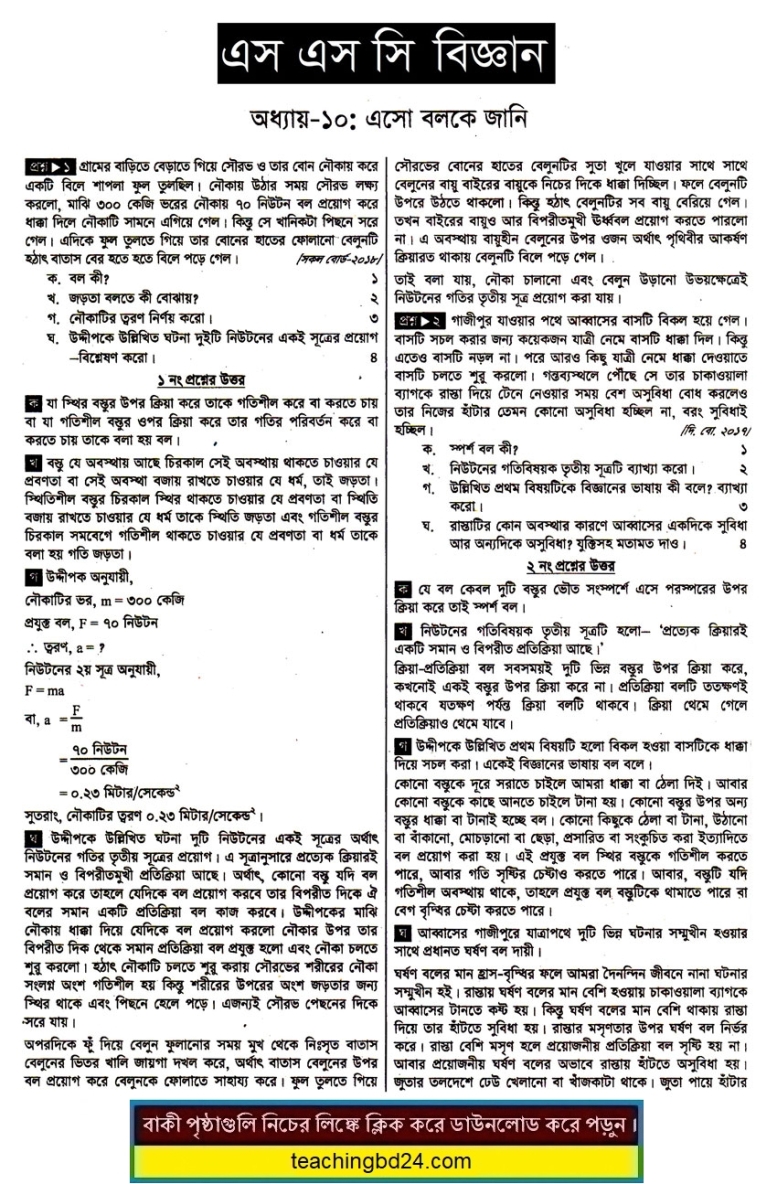Chapter 10. Let Us Know the Force. We are pulling or pushing something in every moment. To change the state of motion of an object we pull or push, that is, we apply force. An object at the state of rest can be brought in the state of motion again an object in motion can be changed the direction and magnitude of motion even its motion can be stopped by applying force. We will discuss in this chapter about the inertia, the force, the effect of force on a body at rest or in motion, Newton’s first law of motion, nature of force, measurement of force, Newton’s second law of motion, action-reaction of forces and Newton’s third law of motion.
If anyone of your friends wants to displace you by keeping his hand on your body then you will say that he is pushing you. If we want to displace anything then we push it. If we want to bring anything near to us we pull it. This push or pull on a body by another body is the force. Whenever we push or pull, raise or bend, twist or tear, expand or compress anything, then we actually apply force. Scientist Sir Isaac Newton in 1667 published three laws making relationships among force, mass, inertia, and motion of objects. These three laws are known as Newton’s laws of motion.
Chapter 10. Let Us Know the Force


In physics, a force is any interaction that, when unopposed, will change the motion of an object. A force can cause an object with mass to change its velocity (which includes beginning moving from a state of rest), i.e., to accelerate. Force can also be described intuitively as a push or a pull. A force has both magnitude and direction, making it a vector quantity. It is measured in the SI unit of newtons and represented by the symbol F.
The original form of Newton’s second law states that the net force acting upon an object is equal to the rate at which its momentum changes with time. If the mass of the object is constant, this law implies that the acceleration of an object is directly proportional to the net force acting on the object, is in the direction of the net force, and is inversely proportional to the mass of the object.
Concepts related to force include thrust, which increases the velocity of an object; drag, which decreases the velocity of an object; and torque, which produces changes in the rotational speed of an object. In an extended body, each part usually applies forces on the adjacent parts; the distribution of such forces through the body is the internal mechanical stress. Such internal mechanical stresses cause no acceleration of that body as the forces balance one another. Pressure, the distribution of many small forces applied over an area of a body, is a simple type of stress that if unbalanced can cause the body to accelerate. Stress usually causes deformation of solid materials, or flow in fluids.
teachingbd24.com is such a website where you would get all kinds of necessary information regarding educational notes, suggestions and questions’ patterns of school, college, and madrasahs. Particularly you will get here special notes of physics that will be immensely useful to both students and teachers. The builder of the website is Mr. Md. Shah Jamal Who has been serving for 33 years as an Asst. Professor of BAF Shaheen College. He expects that this website will meet up all the needs of Bengali version learners /students. He has requested concerned both students and teachers to spread this website home and abroad.
Discover more from Teaching BD
Subscribe to get the latest posts sent to your email.


